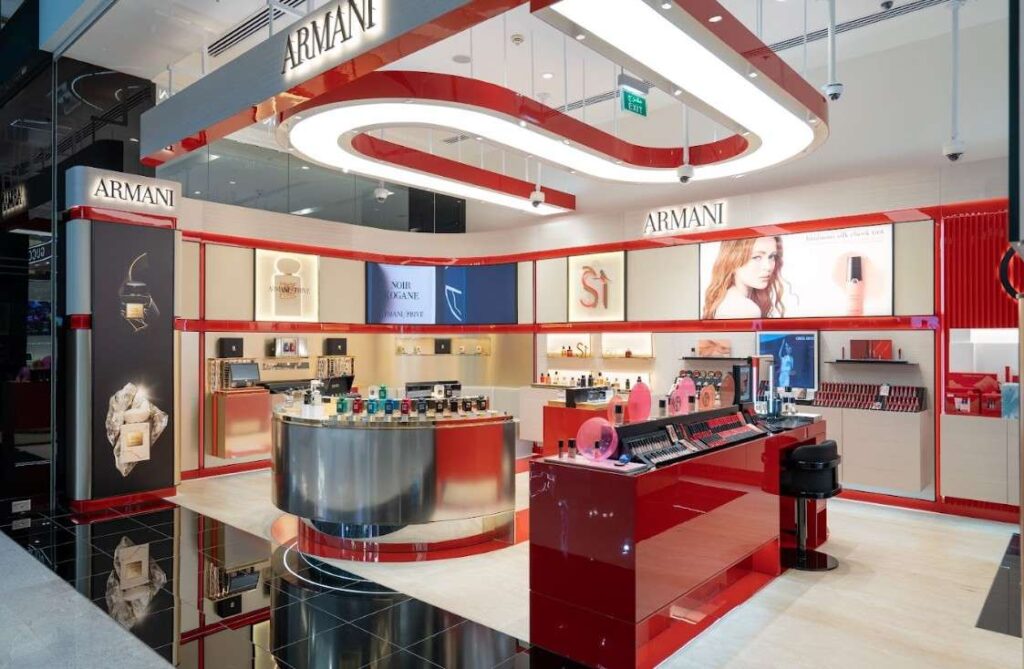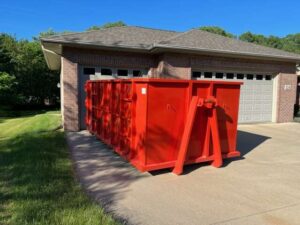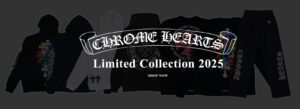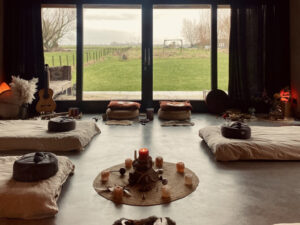The luxury retail market in the UAE is experiencing unprecedented growth, with the sector expected to reach $12.8 billion by 2025. Premium retail fitouts have become essential for luxury brands seeking to create immersive shopping experiences that resonate with affluent consumers. Modern shoppers demand more than just products – they seek memorable experiences that reflect their lifestyle and values.
This transformation in consumer behaviour has driven luxury retailers to invest heavily in innovative store designs that blend technology, craftsmanship, and artistic expression. In this comprehensive guide, you’ll discover the latest trends in luxury retail store fitting, explore cutting-edge design concepts that are reshaping the industry, and learn how to create spaces that captivate customers while maximizing sales potential. We’ll cover sustainable design approaches, technology integration strategies, and the psychological elements that make luxury spaces truly compelling.
Current Trends Shaping Luxury Retail Spaces
Biophilic Design Elements
Natural materials and living elements are becoming central to luxury retail environments. Stone, wood, and water features create calming atmospheres that encourage customers to spend more time in stores. Living walls and carefully curated plant installations not only purify the air but also provide Instagram-worthy backdrops that customers love to share on social media.
Modular and Flexible Layouts
The ability to quickly reconfigure spaces for different seasons, collections, or events has become crucial. Modular fixtures and movable walls allow brands to refresh their stores without complete renovations. This flexibility helps maintain customer interest and accommodates changing inventory needs throughout the year.
Artisanal Craftsmanship Focus
Handcrafted elements and visible craftsmanship are gaining prominence in luxury retail spaces. Custom millwork, hand-forged metal details, and artisan-made fixtures communicate quality and exclusivity. These elements create talking points that enhance the brand story and justify premium pricing.
Technology Integration in Modern Luxury Retail
Smart Mirrors and Digital Displays
Interactive mirrors that display product information, styling suggestions, and virtual try-on capabilities are transforming fitting rooms. These technologies reduce the need for staff assistance while providing personalized experiences that feel futuristic yet intuitive.
Augmented Reality Features
AR technology enables customers to visualise how products will look in their homes or on their bodies before making a purchase. This technology is particularly effective for jewellery, accessories, and home décor items, as it reduces return rates while increasing customer confidence.
Climate and Lighting Control Systems
Advanced environmental control systems maintain perfect conditions for both products and customers. Bright lighting that adjusts throughout the day and responsive climate control create comfortable environments that encourage longer shopping sessions.
Design Psychology in Luxury Retail Environments
Colour Psychology and Material Selection
Warm, neutral tones with strategic accent colours create welcoming yet sophisticated atmospheres. Materials such as marble, brass, and rich fabrics convey luxury while maintaining a timeless appeal. The careful selection of textures and finishes can significantly influence customer behaviour and purchasing decisions.
Spatial Flow and Customer Journey
The layout of luxury retail spaces must guide customers naturally through the store while creating moments of discovery. The strategic placement of high-value items, comfortable seating areas, and clear sightlines helps maximise sales opportunities while maintaining an elegant shopping experience.
Sensory Branding Elements
Signature scents, carefully curated music, and tactile experiences all combine to create memorable brand impressions. These sensory elements work subconsciously to build emotional connections with customers, encouraging brand loyalty and repeat visits.
Sustainable Luxury Retail Design
Eco-Friendly Materials
Sustainable materials, such as reclaimed wood, recycled metals, and low-VOC finishes, are becoming the standard in luxury retail environments. These choices appeal to environmentally conscious consumers while maintaining the high quality and aesthetic standards expected in premium spaces.
Energy-Efficient Systems
LED lighting systems, energy-efficient HVAC units, and intelligent building management systems reduce operational costs while supporting sustainability goals. These systems often pay for themselves through reduced utility bills and enhanced brand reputation.
Circular Design Principles
Designing spaces with end-of-life considerations in mind allows for more straightforward renovation and material recovery. This approach reduces waste while providing flexibility for future store updates and redesigns.
Regional Considerations for UAE Luxury Retail
Cultural Sensitivity
Understanding local customs and preferences is crucial for creating successful luxury retail designs in the UAE. This includes considerations for modest dress requirements, prayer times, and cultural celebrations that might affect shopping patterns.
Climate Adaptation
The harsh desert climate requires specific design considerations, including robust air conditioning systems, UV-resistant materials, and efficient insulation. These elements ensure customer comfort while protecting valuable merchandise.
Local Craftsmanship Integration
Incorporating traditional UAE craftsmanship and design elements can create unique spaces that resonate with local customers while maintaining international luxury standards. This approach enables brands to establish more meaningful connections with their regional market.
Future-Proofing Luxury Retail Spaces
Adaptable Infrastructure
Installing comprehensive electrical and data infrastructure during initial construction allows for easy technology upgrades as innovations emerge. This forward-thinking approach prevents costly renovations when implementing new systems.
Wellness-Focused Design
Incorporating wellness elements, such as air purification systems, circadian lighting, and stress-reducing design features, appeals to health-conscious luxury consumers. These elements create environments that feel nurturing and premium.
Community Integration
Creating spaces that serve as community hubs through events, workshops, and cultural activities helps build brand loyalty while maximising space utilisation. This approach transforms retail spaces into destination locations.
Conclusion
The luxury retail landscape is evolving rapidly, driven by shifting consumer expectations and technological advancements. Shopfitting for luxury brands now requires a holistic approach that combines aesthetic excellence with functional efficiency and sustainable practices. Success in this competitive market depends on creating spaces that tell compelling brand stories while providing exceptional customer experiences. For luxury retailers seeking to establish or revamp their presence in the UAE market, partnering with experienced professionals who comprehend both global trends and local preferences is crucial for achieving lasting success.
Ready to transform your luxury retail space? Contact our expert team today to discover how we can create a bespoke fitting solution that elevates your brand and captivates your customers.
- Creative Luxury Retail Store Fitting Ideas and Concepts for 2025
- Explore creative luxury retail store fitting concepts for 2025 to elevate customer experience with modern layouts and premium displays.
- Luxury Shopfitting UAE,Luxury Showroom Fitouts
Related posts:
 Discover the Best Fence Installation Services in Omaha with Huskins Services LLC
Discover the Best Fence Installation Services in Omaha with Huskins Services LLC
 Summer Solstice Party Ideas & Activities for a Magical Celebration | BizzCrave
Summer Solstice Party Ideas & Activities for a Magical Celebration | BizzCrave
 At the Time of Booking: What to Keep in Mind During a Medical Emergency
At the Time of Booking: What to Keep in Mind During a Medical Emergency
 Streamline Your Business with an Automated Employee Payroll System
Streamline Your Business with an Automated Employee Payroll System
 Nutrition and Wellness Programs in Assisted Living Communities in Oakville
Nutrition and Wellness Programs in Assisted Living Communities in Oakville
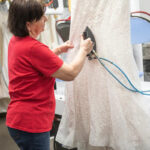 Dresses Dry Cleaner services Lisle, IL: BY Napervalue Cleaners
Dresses Dry Cleaner services Lisle, IL: BY Napervalue Cleaners
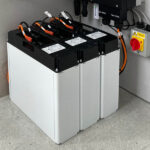 What to Expect When Buying a Solar Battery Locally – Pricing, Quality, and Local Support Insights
What to Expect When Buying a Solar Battery Locally – Pricing, Quality, and Local Support Insights
 Welcome to Oasis Fitness: Your Path to Strength, Balance, and Renewal
Welcome to Oasis Fitness: Your Path to Strength, Balance, and Renewal



